1. Basic Assumptions
1.1. What is learning?
1.1.1. PROCESS OF LEARNING:
1.1.2. Learners learn through modeled behaviors.
1.1.3. Components of Learning: behavioral mode, consequence of behavioral model, consequence of modeled behavior, learner internal process, leaner perceived efficacy
1.2. What is the role of the environment?
1.2.1. The Triad and the Social Context of Learning
1.3. What are the outcomes of learning?
1.3.1. Representational Systems: memory codes of behaviors using symbols
1.3.2. Learning results in the acquisition of verbal and visual behavior codes
1.4. What are the assumptions of Social-Cognitive Theory?
1.4.1. The importance of learner cognitive decision-making processes
1.4.1.1. The learner can: a) gain information through observation, and b) make decisions, adapt, and act.
2. History of Theory
2.1. Albert Bandura
2.1.1. Began exploring social-cognitive theory by looking at the limitations of previous theories of imitative behavior that focused on pro/anti-social behaviors
2.2. Imitative Learning
2.2.1. Learners imitate modeled behaviors in which reinforcements to responses to models lead to repeated behavior
2.3. Disadvantages of Theory
2.3.1. Difficult to develop learner self-regulatory system and build learner self-efficacy
2.3.1.1. **Possible Dissertation topic?
3. References
3.1. Disclaimer: This CYU map is intended for student purposes and therefore is written in summary format of a variety of sources. All sources referenced are located in the attached document.
4. Key Components, Elements, & Principles
4.1. Modeling
4.1.1. Factors that influence responsiveness to models:
4.1.1.1. 1. Attributes of the model (relevance & credibility)
4.1.1.2. 2. Uncertainty of Course of Action
4.1.2. Vicarious Reinforcement:
4.1.2.1. 1. Behavior of model must cause reinforcement
4.1.2.2. 2. Learner positive reaction must be stimulated
4.1.3. Vicarious Punishment:
4.1.3.1. 3 Main Effects: 1) Outcomes give information about behaviors that would be punished 2) restraining of imitative aggression 3) devaluation of model
4.1.4. Direct Reinforcement:
4.1.4.1. positive reinforcement in operant conditioning
4.1.5. Self-reinforcement:
4.1.5.1. 1. Subsidiary behavior, 2. Reinforcement under control of individual, 3. individual is reinforcement agent
4.1.6. Symbols
4.1.6.1. Symbolic models have replaced direct experiences
4.1.6.1.1. Mass Media: models from the television, internet, etc.
4.1.7. Function of modeled behavior: To transmit information a) prompt a similar behavior, b) strengthen or weaken restraints, c) show new pattern of behavior
4.2. Reciprocal determinism
4.2.1. an interlocking relationship of behavior, environment, and perception and actions.
4.3. Self-Efficacy
4.3.1. Factors Influencing Efficacy beliefs:
4.3.1.1. Mastery Experiences
4.3.1.2. Vicarious Experiences
4.3.1.3. Social Persuasion
4.3.1.4. Physiological and emotional states
5. Major Classroom Implications
5.1. Self-Efficacy
5.1.1. Learner belief of own capabilities
5.1.1.1. Students will avoid tasks that they believe are beyond their ability.
5.1.2. Self-Appraisal: could be integrated through self-assessments
5.2. Self-Regulatory System
5.2.1. DEFINITION: Self-regulation
5.2.2. Factors that influence self-regulation:
5.2.3. Self-regulated learning: learner effort to use emotional, cognitive, and environmental resources, self observation, judgement, and response to own progress
5.2.4. Components: standards for own behavior, self-observation, self-judgement, and self-reaction
5.3. Individual Learner Characteristics
5.3.1. Readiness: developmental level of learner and receptivity
5.3.2. Motivation: 1) The cognitive representations of future consequences for behaviors. or 2) self-motivation from setting standards and self evaluating

